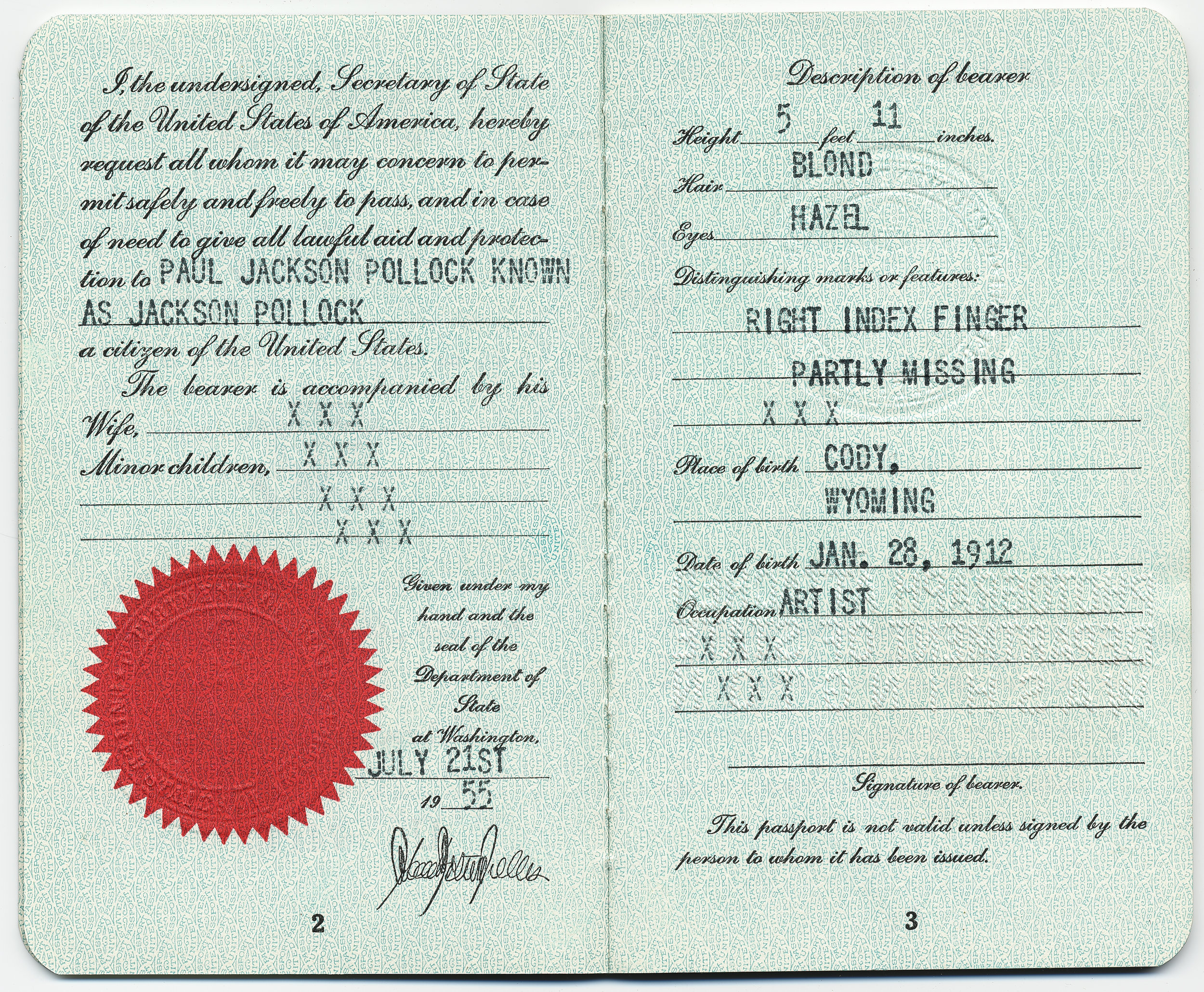Jackson Pollock's Calligraphy in Composition • A Reflection by Helen A. Harrison
Guest User
Starting in the early 1940s, Jackson Pollock’s abstract compositions include forms that look like letters and numbers. Paintings such as Male and Female (1942-43), Guardians of the Secret (1943), and especially Stenographic Figure (1942) contain many such elements. Less explicitly, in Pollock’s poured paintings the free-flowing linear shapes suggest cursive calligraphy. If we accept his assertion that “technique is just a means of arriving at a statement,” it’s not too far-fetched to imagine his art as a kind of communication akin to written language. Yet his actual handwriting—whether fragmentary jottings and drafts, which would naturally be informally written, or more carefully penned examples—bears no resemblance to the writing in his paintings.
Examples of Pollock’s handwriting are in his papers at the Archives of American Art. The script is halting, often with crossed-out passages, dashes, and other hesitations. His awkward penmanship contrasts sharply with the graceful rhythmic flow of his classic paintings. Indeed, he seems to have had more control over sweeping spontaneous gestures than over the intimate and deliberate motions of handwriting.
Jackson Pollock's passport, 1955 July 21. Jackson Pollock and Lee Krasner papers, circa 1905-1984. Archives of American Art, Smithsonian Institution.
But that impression is contradicted by many of his drawings, especially those of the mid 1940s, in which complex graphic patterns were created by finely calibrated marks. They show him to have been capable of handling a pen, pencil or crayon with great finesse. And in an untitled 1951 drawing that he gave to Clement Greenberg, the word “kiss” is repeated as a linear motif—another intriguing example of Pollock’s use of calligraphic imagery as an integral compositional element.
Helen A. Harrison, the Eugene V. and Clare E. Thaw Director of the Pollock-Krasner House and Study Center in East Hampton, New York, is an art historian, curator and journalist specializing in modern American Art. Her most recent books are a monograph on Jackson Pollock and a mystery novel, An Exquisite Corpse: Death in Surrealist New York.


